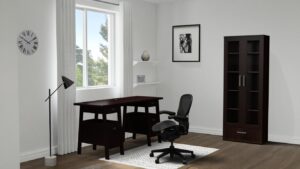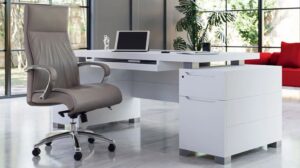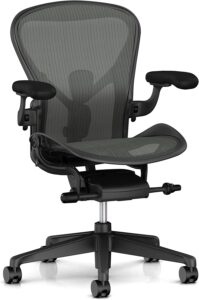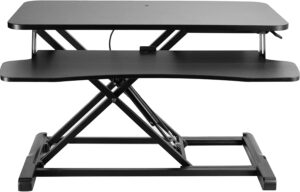Office Furniture Product Reviews
Welcome to our Office Furniture Product Reviews page , your definitive guide to essential office furniture. This space is an extensive library of in-depth, unbiased reviews crafted to provide a panoramic view of a product’s design, functionality, and value for money. We scrutinize everything from ergonomics to assembly, durability to customer support, helping you make an informed decision. Catering to various budgets and styles, we explore high-end ergonomic chairs to budget-friendly desk solutions, ensuring your workspace is not only productive but also reflects your personality and style. Engage with our rich content, complete with high-quality images and videos, and find that perfect piece of furniture that transforms your office space. Your dream workspace is just a few clicks away with the aid of our office furniture product reviews.
Office Product Reviews
Office Furniture FAQs
1. What are the key pieces of office furniture?
Key pieces of office furniture include office desks, chairs, file cabinets, bookshelves, and workstations. Other items may include conference tables, cubicle systems, ergonomic furniture, and specialized storage solutions.
2. Why is ergonomic office furniture important?
Ergonomic office furniture is designed to support the natural posture and reduce the risk of musculoskeletal disorders. By improving comfort and promoting healthy movements, it can enhance productivity and overall wellbeing at work.
3. What should I consider when choosing an office chair?
Consider factors such as adjustability (including seat height, backrest, and armrests), material, cushioning, stability, swivel, and mobility. An ergonomic design that supports your lumbar spine is important for comfort during long hours of use.
4. What is the best material for office furniture?
There’s no one-size-fits-all answer as it depends on your needs, preferences, and budget. Common materials include wood (for a classic, sturdy look), metal (for durability and modern style), and glass (for a sleek, contemporary feel).
5. How can I maintain my office furniture?
Regular cleaning with suitable products can help maintain your office furniture. For wooden items, use a damp cloth and a wood cleaner. For metal or glass items, a general all-purpose cleaner should suffice. Avoid harsh chemicals that might damage the material.
6. What are sit-stand desks and why are they beneficial?
Sit-stand desks are adjustable desks that allow you to alternate between sitting and standing while you work. They promote better posture, reduce the risk of back pain, and help increase productivity by providing movement variety.
7. How can I choose the right office desk?
Consider the desk size in relation to your office space, the desk style that complements your office decor, storage options (like drawers or shelves), and the material. Also, consider whether you need special features like height adjustability.
8. How does office furniture impact productivity?
Office furniture significantly impacts productivity. Comfortable, ergonomic furniture can reduce physical strain and fatigue, allowing employees to focus better. Moreover, a well-organized workspace with proper storage can reduce clutter and distraction.
9. How often should office furniture be replaced?
With good care, office furniture can last many years. However, chairs and desks subjected to heavy use may need replacement every 5-10 years. Ergonomic standards and styles also change over time, which might prompt an update.
10. What is modular office furniture and why might I choose it?
Modular office furniture is designed with flexibility and adaptability in mind. It allows you to easily reconfigure your office layout as your needs change. It’s a great choice if you anticipate future growth or frequent rearrangement.
11. Is it better to lease or buy office furniture?
This depends on your budget, business stability, and furniture needs. Leasing can be cost-effective for startups or companies with changing needs. Buying is a good long-term investment if you have a stable setup and want full control over your furniture.
12. What are the environmental considerations when buying office furniture?
Consider furniture made from sustainable or recycled materials. Check if the manufacturer has eco-friendly practices. Some furniture can be disassembled for recycling at end of life. Buying quality furniture that lasts longer also reduces environmental impact.
13. Can office furniture be customized?
Yes, many manufacturers offer customization options, allowing you to choose the materials, colors, and configurations that suit your office space and aesthetic preferences.
14. What is open plan office furniture?
Open plan office furniture is designed for open workspaces without partitioned offices or cubicles. It often includes shared tables or benches, movable screens, and flexible seating options to facilitate collaboration while also allowing some personal space.
15. How can I maximize space with office furniture?
Choose furniture that offers multiple functions, such as desks with integrated storage. Consider wall-mounted shelves or vertical file cabinets. Modular furniture can be rearranged as needed. An appropriately sized desk and chair can also save space.
16. What is collaborative office furniture?
Collaborative office furniture is designed to support group work. This can include large tables, movable chairs, whiteboard surfaces, and furniture with integrated technology like screen sharing capabilities. It fosters a more interactive, team-oriented environment.
17. How does color impact office furniture choices?
Color can influence mood and productivity. Blue and green promote calm and focus, yellow stimulates creativity, and red increases energy. Choose colors that support the work done in the space. Color consistency can also enhance your office’s overall aesthetic.
18. What’s the difference between residential and commercial grade office furniture?
Commercial grade furniture is designed for frequent use and durability, often meeting specific standards for safety and durability. Residential grade may be more design-focused but less durable. For heavy use, commercial grade is typically recommended.
19. What is the typical lead time for office furniture delivery?
Lead times vary by manufacturer and product. Stock items might be delivered within a week, while custom or large-scale orders may take several weeks. Always check the estimated delivery time before ordering.
20. Where can I buy office furniture?
Office furniture can be purchased from brick-and-mortar stores, online retailers, direct from manufacturers, or through office supply companies. Each source offers different advantages in terms of price, variety, customizability, and service.




